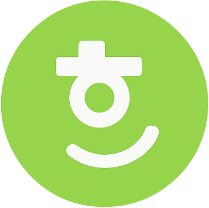Your Korean Dream Job: Master the ‘Injeok-sahang’!
Hello! This is [Maeil Hangul], here to upgrade your Korean skills!
Are you dreaming of working in Korea? Then today’s lesson is a must-know! We’re going to tackle a crucial first step: filling out the 인적사항 (injeok-sahang), or the ‘Personal Information’ section of a Korean resume, called an 이력서 (iryeokseo).
You might be thinking, “Is it different from resumes in my country?” Yes, it can be! Nowadays in Korea, there’s a growing trend of “blind hiring” (블라인드 채용), where companies focus only on skills. However, many traditional application forms still ask for information that might surprise you. Let’s dive in and clear up all the confusion so you can create the perfect resume!
Core Expressions You Need to Know
Here are the essential words for the top section of your resume.
- 1. 이력서 (Iryeokseo)
- Pronunciation [Romanized]: I-ryeok-seo
- English Meaning: Resume / CV (Curriculum Vitae)
- Detailed Description: This is the standard word for a resume in Korea. When a company asks you to submit your
이력서, they are asking for your professional history, skills, and personal details in a standardized format.
- 2. 인적사항 (Injeok-sahang)
- Pronunciation [Romanized]: In-jeok-sa-hang
- English Meaning: Personal Information / Personal Details
- Detailed Description: This is the title of the first section on almost every Korean resume. It literally means “personal matters” and includes your name, photo, contact information, and sometimes your date of birth and address.
- 3. 증명사진 (Jeungmyeong-sajin)
- Pronunciation [Romanized]: Jeung-myeong-sa-jin
- English Meaning: ID Photo / Headshot
- Detailed Description: This isn’t just any selfie! A
증명사진is a professional-looking headshot, similar to a passport photo but often with a bit more personality (a slight smile is okay!). It’s usually taken against a plain background (blue or white is common). Many traditional companies still require this.
- 4. 연락처 (Yeollakcheo)
- Pronunciation [Romanized]: Yeol-lak-cheo
- English Meaning: Contact Information
- Detailed Description: This is a crucial part of your
인적사항. It always includes your mobile phone number (휴대폰 번호) and your email address (이메일 주소). Make sure it’s up-to-date so recruiters can reach you!
Example Dialogue
Let’s see how these words are used in a real conversation between two friends preparing job applications.
A (Anna): 지훈아, 내 이력서 좀 봐줄 수 있어? 특히 인적사항 부분이 좀 헷갈려.
(Jihun, can you look at my resume? I’m especially confused about the Personal Information section.)
B (Jihun): 물론이지. 음… 증명사진은 아직 안 넣었네?
(Of course. Hmm… you haven’t added your ID photo yet?)
A (Anna): 응. 요즘 블라인드 채용이 트렌드라고 들어서. 꼭 필요할까?
(Yeah. I heard blind hiring is the trend these days. Is it really necessary?)
B (Jihun): 그래도 아직 사진을 요구하는 회사가 많아. 일단 준비해두는 게 좋아. 연락처는 잘 썼네!
(Still, many companies ask for a photo. It’s better to have one prepared just in case. You wrote your contact information perfectly!)
Culture Tip & Trend Deep Dive: The Photo Paradox
So, why the confusion about photos?
In the past, the 증명사진 was considered very important. Recruiters believed it gave them a sense of a candidate’s personality and professionalism. Along with age and other details, it was part of creating a complete picture of the applicant.
However, to promote fairer hiring practices, the Korean government introduced “Blind Hiring” (블라인드 채용), especially for public sector jobs. This trend has spread to many startups and large corporations. A “blind” resume hides the 증명사진, date of birth, and family background so recruiters can focus purely on your skills and experience.
So, what should YOU do?
* Check the company! If you’re applying to a modern IT company or a startup, they might use a “blind” application.
* When in doubt, prepare one. For most traditional companies, it’s safer to have a professional 증명사진 ready.
* Look at the application form. The form itself is your best guide. If there’s a box for a photo, you should probably include one. Knowing these cultural nuances will make you look like a well-prepared and savvy applicant!
Let’s Review and Practice!
Great job today! We learned that a Korean resume is called an 이력서, and the personal details section is the 인적사항. This section often includes your 증명사진 (ID photo) and your 연락처 (contact info).
Now, let’s test your knowledge!
- Fill in the blank:
A recruiter needs to call you for an interview. They will look for your ________ on your 이력서.
(Answer: 연락처) -
Your Turn!
Imagine you are writing your resume. How would you write your contact information? Try writing a sentence in Korean. (e.g., 제 이메일 주소는… / 제 휴대폰 번호는…)
Feeling more confident about making your Korean resume? Leave a comment below using one of the words we learned today! Good luck with your job search






